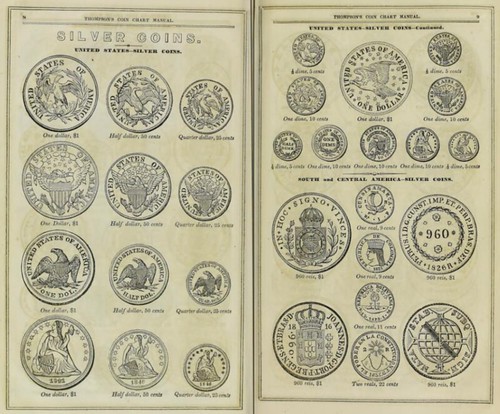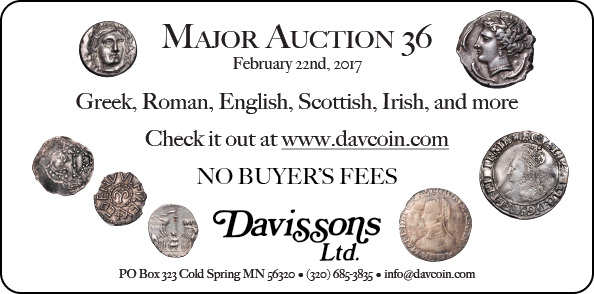
PREV ARTICLE
NEXT ARTICLE
FULL ISSUE
PREV FULL ISSUE
19TH CENTURY COIN CHART MANUALSThe February 2017 issue of The E-Gobrecht, the electronic newsletter of the Liberty Seated Collectors Club, has an article by Len Augsburger on 19th century coin chart
manuals. With permission, we're republishing it here. -Editor
 Prior to the ubiquitous federal currency of today, the 19th century saw a host of paper money issued by banks across the land. To- day, many collectors acquire obsolete bank notes on a state-by-state basis, with Whitman’s Encyclopedia of Obsolete Paper Money (seven volumes published and counting) leading the way as the collector’s standard guide. The vast assortment of different designs on paper money is great for today’s collectors but was even better for 19th century ne’er-do-wells, as passing a spurious note was a more manageable task with so many types in circulation. Into this mess of paper money stepped the 19th century counterfeit detectors, publications intended to help the public sort the good from the bad. These publications listed sound (and un- sound) banks, offered tips for identifying counterfeit items, and illustrative plates of varying quality. Readers may recall an analogous situation in the 20th century – in the 1970s one occasionally saw merchants referencing publications that listed fraudulent credit card numbers. Along the way, someone got the idea that in addition to currency, one might also list coins, thus birthing the 19th century coin chart manuals. Although the U.S. Mint began striking coins in the 1792, a wide array of foreign coinage continued to circulate in the U.S. well into the 1850s. The coin chart manuals helped the money handlers identify the pieces passing through their hands, and thus provide us a glimpse into 19th century circulation patterns. Thompson’s Coin Chart Manual, 1848 (online at https://nnp.wustl.edu/library/book/525250) is a typical example. It provides line engravings of American, European, and Latin American gold and silver coinage and the omission of copper coinage tells us something immediately – American coppers were struck in large quantities since the 1790s and by this time readily known. Precious metal coins were another story. The plate illustrated above depicts everything that Thompson’s conveyed in relation to American silver coinage in 1848. Note first that of 29 plates dedicated to silver coinage, only these two illustrate American pieces. Clearly, a large variety of world silver also circulated. Both obverse and reverse of the new Liberty Seated designs are shown, while for Flowing Hair and Bust coinage only the reverses are illustrated. The publisher apparently felt that the public was sufficiently familiar with the Bust and Flowing Hair obverses. We also see the reverse of a Gobrecht dollar – indicating that these coins were somewhat known and might occasionally be seen in circulation. While the currency detectors for this period vastly outnumber the coin chart manuals, these ephemeral publications remain one of the few windows into the circulating coinage of the 19th century. For more information about the Liberty Seated Collectors Club, see: Wayne Homren, Editor The Numismatic Bibliomania Society is a non-profit organization promoting numismatic literature. See our web site at coinbooks.org. To submit items for publication in The E-Sylum, write to the Editor at this address: whomren@gmail.com To subscribe go to: https://my.binhost.com/lists/listinfo/esylum All Rights Reserved. NBS Home Page Contact the NBS webmaster 
|
